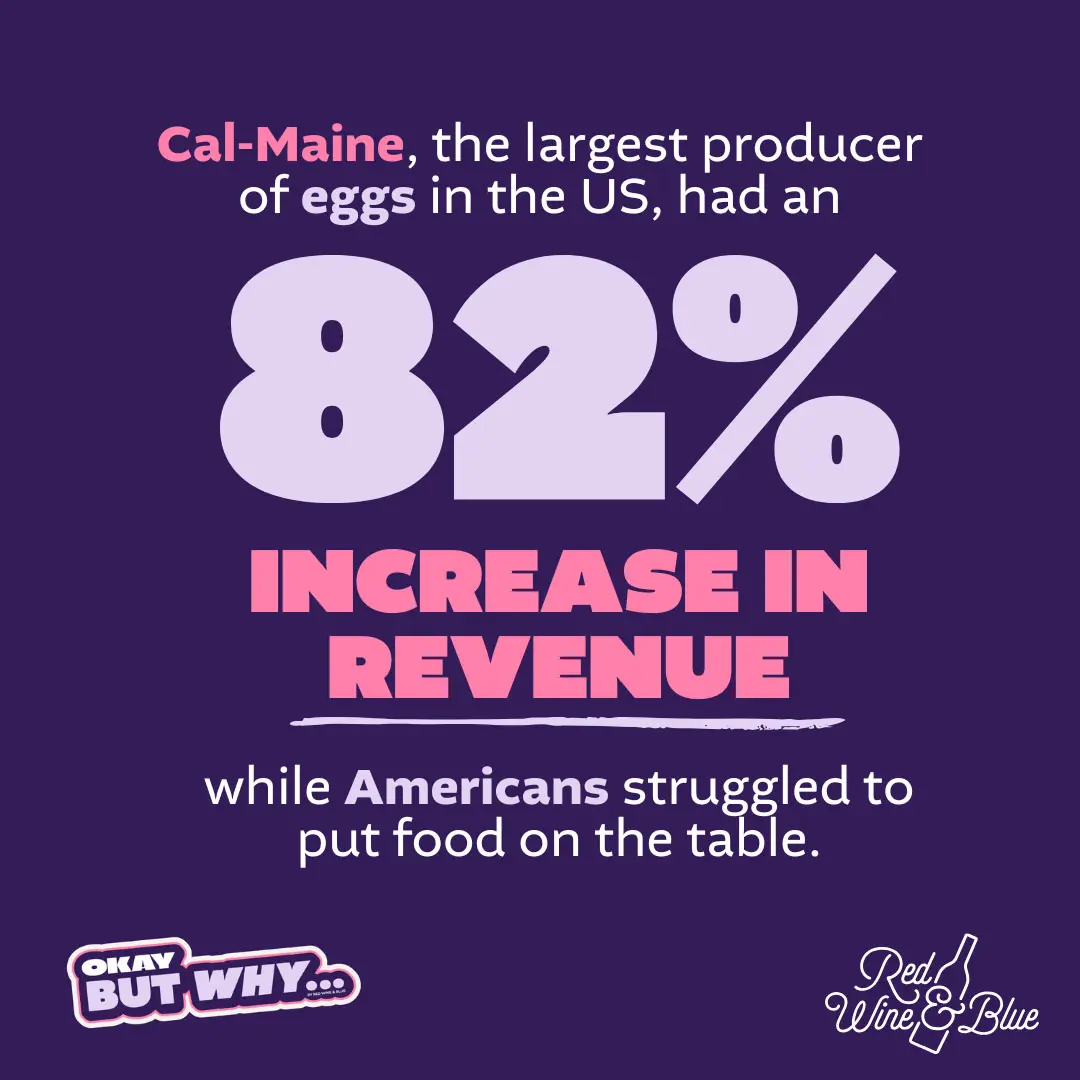
Okay, But Why Are Eggs Still So Expensive?
During the 2024 election cycle, we heard lots of campaign promises about lowering the price of eggs on Day One. So what happened? We’re well into 2025 and egg prices are still really high. In fact, grocery prices in general are high – and continue to rise.
So what gives? Why is everything so expensive? And why is the government trying to cut funding to programs that help families put food on the table at the worst possible time?
When it comes to egg prices specifically, the explanation we’ve been hearing is that it’s all due to the avian flu outbreak. But as it turns out, it’s really not that simple.
First, farmers rely on the Center for Disease Control to track outbreaks and provide help to address them. But cuts to CDC and Department of Agriculture staff means fewer people available to work on issues like this. Plus, in the United States, we rely pretty heavily on factory farming, which makes it a lot easier for diseases like avian flu to spread. And while importing eggs from other countries might seem like a good alternative, the tariffs implemented by President Trump means those eggs will be expensive too. Those tariffs also have an impact on other grocery prices. For example, more than half of our fruits and vegetables come from Mexico.
Something else to note: profit margins for grocery stores and their suppliers have been steadily increasing – which implies they’ve been raising prices even though their costs haven’t also been increasing. In other words, if their costs stay the same and they keep raising prices, they make more money. That’s just math. And again, it’s not just eggs. This is happening across the board. Corporate profits are at an all-time high, despite the stress that most families are feeling as they try to make ends meet.
And while immigration continues to be an extremely touchy subject, it’s important to recognize that about 73% of agriculture workers are immigrants. Without these workers, the crops can’t be harvested. That means less food making it to our grocery stores, which also leads to higher prices.

At the same time that prices are going up, financial support for families is going down. Under the Trump administration, the U.S. Department of Agriculture has stopped $500 million in deliveries to food banks, leaving many families scrambling to put food on the table. They also cut a billion dollars from programs that helped schools purchase fresh local food. And SNAP – the Supplemental Nutrition Assistance Program (formerly known as food stamps) – is likely to experience major cuts too. Two-thirds of the families that receive SNAP benefits include children, and over a third include older adults or people with disabilities.
Those benefits are more important than ever now that grocery prices are so high, but they’ve always been an important way to make sure that Americans can feed their families. These cuts have real impacts on real people. Many people will go hungry.
Once prices go up, it’s tough to get them back down again. But there are many things elected leaders could be doing right now to lower grocery prices – things like supporting family farms, passing laws to prevent price gouging, and supporting immigrant farm workers. And they could also be advocating for funding for the programs that help families in need. Sometimes all it takes is reaching out to them to let them know how we feel about these issues and telling them what we need them to do.
Interested in learning more about inflation and the economy? Click here to learn more.
